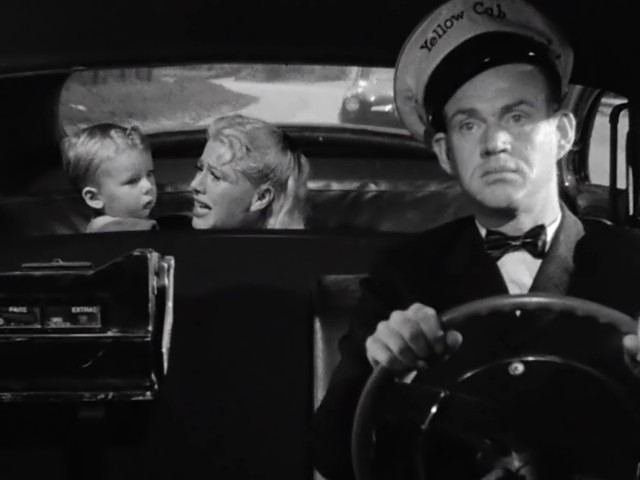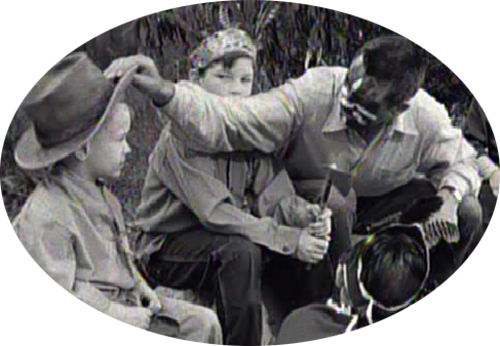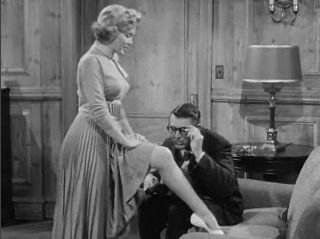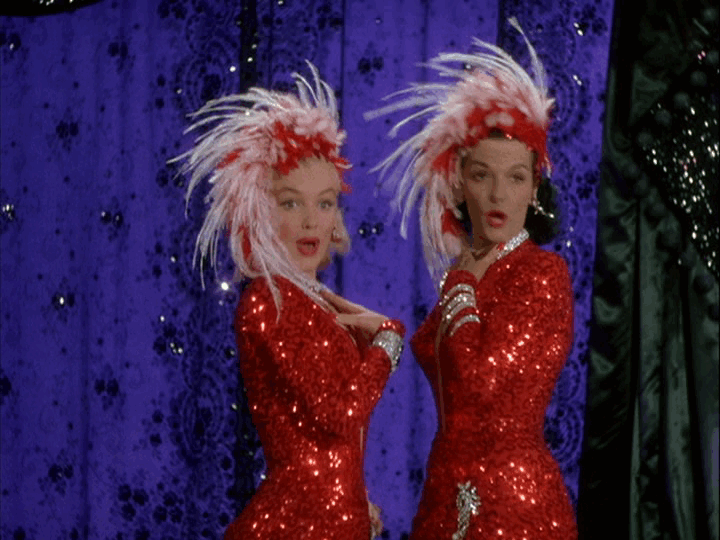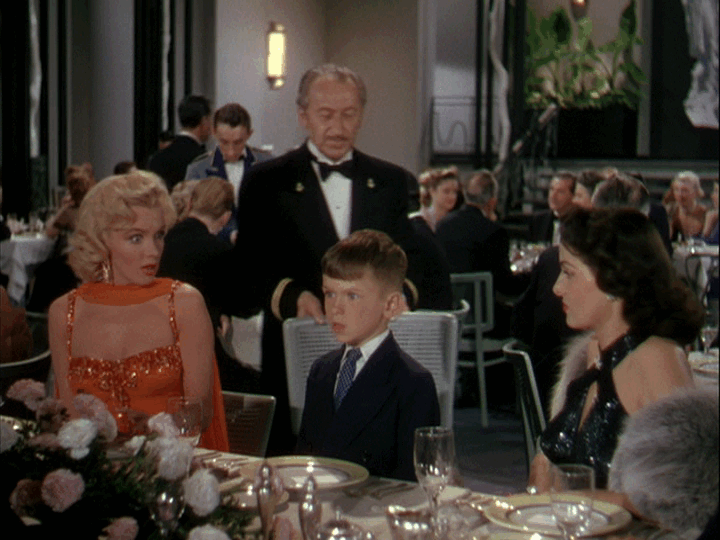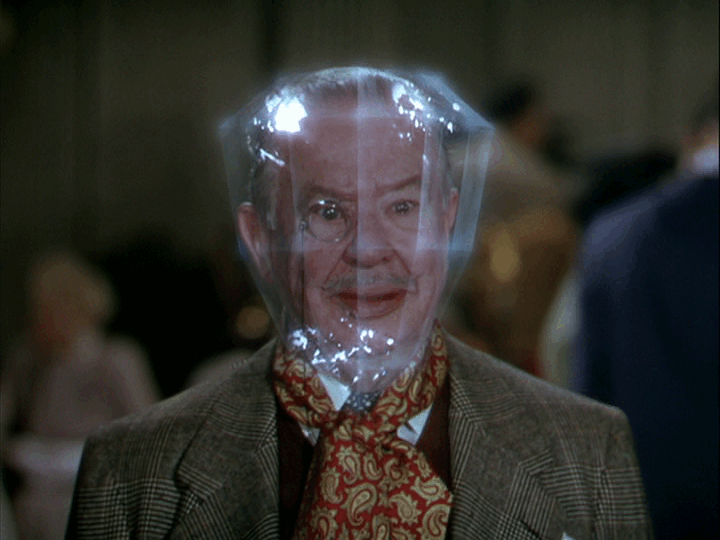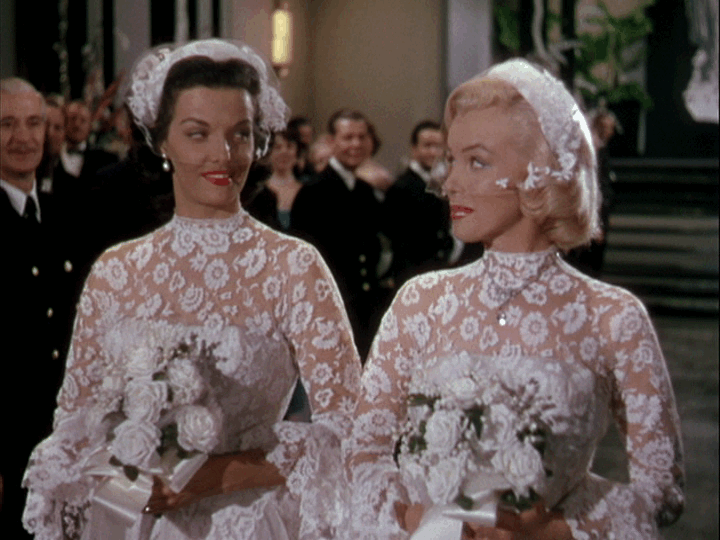Written for The Unquiet American: Transgressive Comedies from the U.S., a catalogue/ collection put together to accompany a film series at the Austrian Filmmuseum and the Viennale in Autumn 2009. — J.R.
MONKEY BUSINESS (1952)
Although technically a fantasy, this characteristically
grim Howard Hawks comedy about the fear of aging
and the worship of youth is arguably one of his most
honest and realistic, therefore among the most frightening.
A chimpanzee in a chemistry lab manages to
create a youth potion accidentally ingested by the
middle-aged scientist-hero (Cary Grant), who regresses
first to his teens and then, after a second dose, to
his attitudes and behavior in grammar school, which
also happens eventually to his wife (Ginger Rogers)
and boss (Charles Coburn), thereby debunking a
good many myths about youth and happiness (such
as those involving carefree innocence) in the process.
Broadly speaking, this movie does for (and with)
ageism what Gentlemen Prefer Blondes, shot half a
year later (with some of the same cast members, including
Marilyn Monroe, Coburn, and George Winslow),
does for (and with) capitalism, albeit with less
celebratory cynicism and more visible despair. This
doesn’t mean, of course, that it isn’t funny; at least
four Hollywood pros (Ben Hecht, Charles Lederer,
I.A.L. Diamond, and the lesser-known Harry Segall)
worked on the screenplay. Note: in the opening,
precredits sequence, the offscreen voice addressing
Grant is that of Hawks.
GENTLEMEN PREFER BLONDES (1953)
This eccentric 50s Hollywood musical (1953,
91 min.), directed by Howard Hawks, might be described
as the best Frank Tashlin film that Tashlin had
nothing to do with. It is characteristic of Hawks in its
concentration on the interactions between two loyal
friends (Marilyn Monroe and Jane Russell as two
showgirls -– the first one interested in money, the second
one interested in love), even if these friends are
uncharacteristically women rather than men,
and all the male characters are in fact viewed as
somewhat ridiculous. But as in the best films of
Tashlin, this is a satiric universe about the excesses of
American capitalism predicated on the kind of exaggeration
and grotesquerie found in cartoons. Hawks
himself didn’t direct any of the musical numbers,
which were handled by Jack Cole, but the overall
unity is never in question, and each of these numbers
represents both a climax in and an extension of the
film’s unwavering thematic concerns. The magical
chemistry between Russell and Monroe, predicated
on the reality of the former and the unreality of the
latter, was understood perfectly by Hawks, and
it fascinatingly anticipates the chemistry between
Dominique Labourier and Juliet Berto in
Jacques Rivette’s Céline et Julie vont en bateau a little
over two decades later. Years later, Russell would cite
this film as her favorite, and it was also clearly the
film that made Monroe into a major star.

